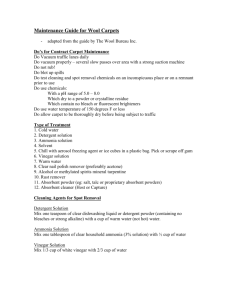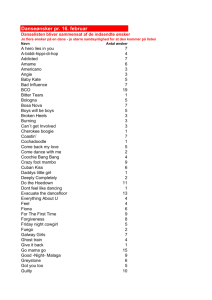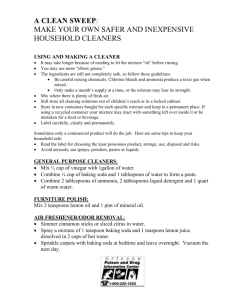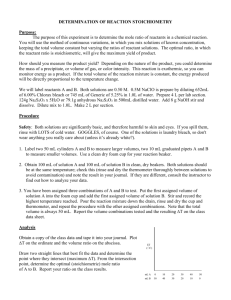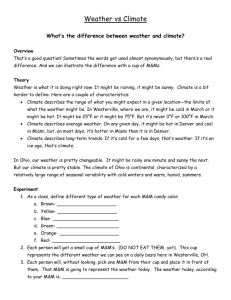What Do Hush Puppy Shoes Have To Do With Your Health?
advertisement
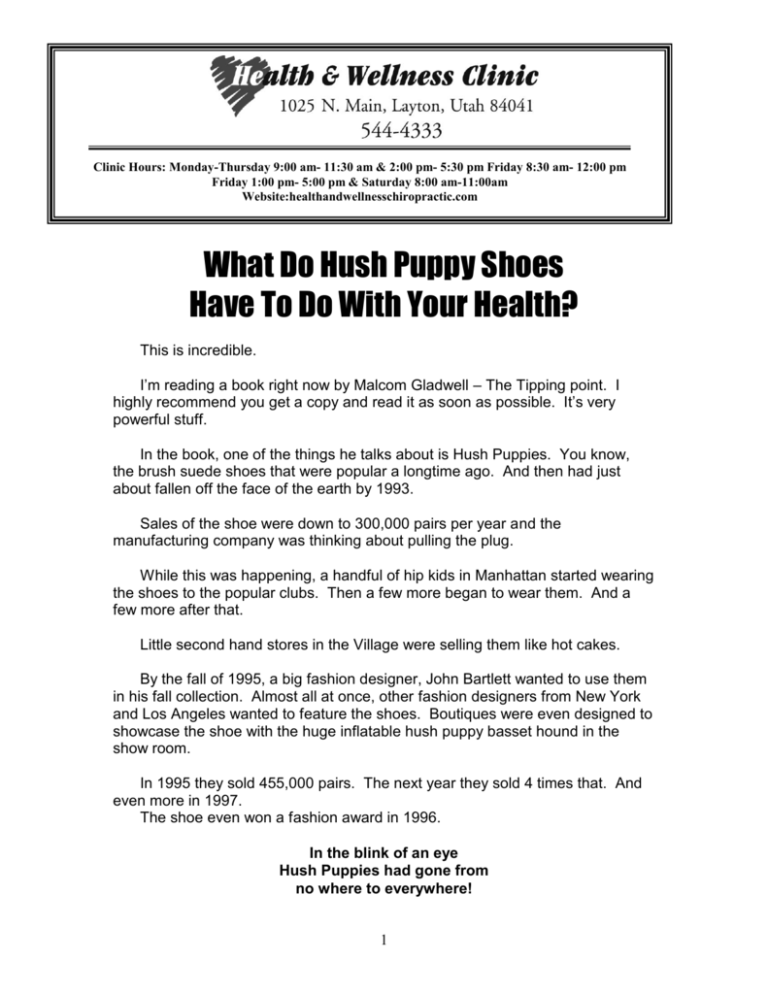
Clinic Hours: Monday-Thursday 9:00 am- 11:30 am & 2:00 pm- 5:30 pm Friday 8:30 am- 12:00 pm Friday 1:00 pm- 5:00 pm & Saturday 8:00 am-11:00am Website:healthandwellnesschiropractic.com What Do Hush Puppy Shoes Have To Do With Your Health? This is incredible. I’m reading a book right now by Malcom Gladwell – The Tipping point. I highly recommend you get a copy and read it as soon as possible. It’s very powerful stuff. In the book, one of the things he talks about is Hush Puppies. You know, the brush suede shoes that were popular a longtime ago. And then had just about fallen off the face of the earth by 1993. Sales of the shoe were down to 300,000 pairs per year and the manufacturing company was thinking about pulling the plug. While this was happening, a handful of hip kids in Manhattan started wearing the shoes to the popular clubs. Then a few more began to wear them. And a few more after that. Little second hand stores in the Village were selling them like hot cakes. By the fall of 1995, a big fashion designer, John Bartlett wanted to use them in his fall collection. Almost all at once, other fashion designers from New York and Los Angeles wanted to feature the shoes. Boutiques were even designed to showcase the shoe with the huge inflatable hush puppy basset hound in the show room. In 1995 they sold 455,000 pairs. The next year they sold 4 times that. And even more in 1997. The shoe even won a fashion award in 1996. In the blink of an eye Hush Puppies had gone from no where to everywhere! 1 What does all this Hush Puppy talk have to do with your health? Good question. If you look at it closely, the way Hush Puppies became a smashing, almost overnight success is the EXACT same way you become and stay healthy… or… get sick. How? The Hush Puppy success can not be attributed to any one LARGE force. Such as a huge marketing campaign. Not at all. It was the accumulation of a bunch of small things that eventually added up that put them over the edge. And, once they were over the edge, things went crazy. The amazing thing is: none of the little things all by themselves seem impressive in any way. None of them seems like they could cause a Hush Puppy epidemic. But, all together, they did. Even the manufacturers could not put their finger on what caused a completely dead shoe to come back with such a vengeance. Basically, tiny things can make a huge difference. Your health acts in the same way. Most people only want to do BIG things. They want wonder drugs. Miracle surgeries. They want immediate results they can FEEL right now… from just one thing. But the real truth is: real health comes from a bunch of little things done over a period of time. Chances are, you will not immediately feel the results of eating a little better. Or exercising a little more. Or reducing some of your stress. Or coming in and getting adjusted when you are not in pain. Each one of those changes is a small thing. Done in isolation for a short time will not bring big, life changing results. But, done together, over a period of time, and you will see exponential results. Results that sneak up on you all of a sudden and are profound – like the Hush Puppy story. But, you also have to remember: the same is true in reverse. A bunch of small BAD things ad up to BIG health problems. 2 You are not completely healthy one day and then sick the next. You are not ok today and tomorrow have a heart attack. Or cancer. Or diabetes. Or whatever. It doesn’t work that way. Years of smoking, drinking, poor diet, no exercise, high stress lack of Chiropractic care are the REAL causes of disease. Years of all those little things ad up to just about all the health problems you will ever face. Most of them can easily be prevented. I hope you get and read Malcolm Gladwell’s book, The Tipping Point. It will change the way you look at life. Tip Of The Month… Spring House Cleaning WITHOUT Toxic Chemicals A Borax - alternative for bleach, deodorizes, prevents mold, removes stains and boosts the cleaning power of soap Cornstarch - cleans and deodorizes carpets and rugs Ketchup - cleans copper Lemon juice - cuts grease and stains on aluminum and porcelain, whitens Salt - makes an abrasive, but gentle, scouring powder Vegetable oil - a furniture polish Washing soda - cuts grease and disinfects White vinegar - cleans windows, shines metal surfaces, removes mildew, stains, grease and wax buildup Sometimes combining some of the above ingredients creates better cleaners, but remember to NEVER MIX BLEACH AND AMMONIA TOGETHER THE FUMES CAN BE DEADLY. complete house cleaning every spring is a good idea. It helps reduce built up allergens and makes your home healthier to live it. It also can be a big boost to state of mind after a long winter. But, it can also be a daunting task. The key is to tackle it just like you would eat an elephant – one bite at a time! Or, in this case, one room at a time. Another consideration is chemicals. Quite often the chemicals from commercial cleaning supplies can aggravate your allergies. They can also have harmful long term effects on your health. And you can get very good results with much less toxic substances. Here are some alternative things you can use this spring to clean your house and stay safe. Ceramic tile cleaner - use a combination of 1/4 cup baking soda, 1/2 cup white vinegar, one gallon warm water, and one cup ammonia Furniture polish - combine 1 teaspoon lemon juice with one pint mineral or vegetable oil Ammonia - cuts grease, strips the wax off floors, and cleans windows Baking soda - cleans, deodorizes, scours, polishes, and removes stains Bleach - whitens practically anything and removes mold and mildew 3 Slow Mold Growth - dilute 3/4 cup chlorine bleach in 1 gallon of water and apply to affected areas or apply full-strength white vinegar Oven cleaner - fill a small glass bowl with 1/2 cup full-strength ammonia, place in oven and close. Let stand overnight. Painted wall and woodwork cleaner combine 1/4 cup ammonia with 1 gallon warm water OR combine l/4 cup liquid dish detergent with 1 gallon water Scouring powder - combine baking soda with a touch of salt Toilet bowl cleaner - combine baking soda and vinegar or use 1/2 cup chlorine bleach Window or mirror cleaner - Combine 3 Tablespoons ammonia, 1 Tablespoon white vinegar and 3/4 cup of water or 1/4 cup white vinegar and 1 quart of water. Wipe dry with newspaper. Quiz Question Q. What is a “Cold Laser?” Cold laser therapy is an application of red and near infrared light over an injured area to improve soft tissue healing and relieve both chronic and acute pain. It has helped thousands of neck, shoulder, and carpal tunnel syndrome patients. ―Cold‖ laser light is painless and no heat is produced. It dramatically boosts the bodies natural healing response. Did You Know?… Health Facts About Low Carb Dieting by Tanya Zilberter, PhD Did you know that our nutritional make up reflects Ice Ages? That low carb diets help in maintenance remission in Crohn's disease? That low carb increased Tryptophan and 5HT? And most importantly - how low carb dieting increases fat burning? ... that in people on a low carb diet, there is a decrease in absorption of carbohydrates coming from foods, so in fact even less carbohydrate is digested than could be expected judging by carb grams in the food? -- J Physiol 1991;437:563-75 ... that a low carbohydrate, low calorie, high-protein diet was effective in treating hearing loss and vertigo in 83% of patients within five months of initiation of treatment? -- Eur J Appl Physiol Occup Physiol 1997;76(2):128-33 ... that Omega-3 fatty acids and a low carbohydrate diet were shown to be efficient for maintenance of remission in Crohn's disease? -- Am J Physiol 1996 Jul;271(1 Pt 2):R144-8 ... that the Ice Ages which dominated the last two million years of human evolution brought a low-carbohydrate, high-protein diet and our nutritional make up reflects the metabolic adaptations that were therefore necessary to accommodate the low glucose intake? -Diabetologia 1994;37(12):1280-6 4 ... that a low-carbohydrate high-protein diet increased the levels of Tryptophan and 5-HT in the brain? These substances are famous for their beneficial effects on mood. -- Nippon Eiseigaku Zasshi 1992;47(2):627-33 ... that a low carbohydrate diet resulted in greater improvement of fasting blood insulin, the glucose/insulin ratio and blood triglycerides? -- Int J Obes Relat Metab Disord 1996;20(12):1067-72 ... that during low carbohydrate diets, elevated sympathetic nervous activity resulted in an increased free fatty acids (FFA) mobilization from the adipose tissue – resulting in an increase in fat burning? – J Sports Med Phys Fitness 1991;31(3):407-12 The Power of Hope Believing that a remedy will work may indeed help it work. This so-called placebo effect has always been a factor in medical treatment. Even in ancient times it was known that the relief a patient may feel when unknowingly given a placebo, such as a sugar pill or a sham procedure, or simply on seeing a doctor, can play a role in recovery. That makes it hard to tell to what extent beneficial results come from a treatment itself or from the patient’s positive expectations. Even with a drug or procedure that has been proven to be more effective than a placebo, a patient’s hope and anticipation that it will help can add to its effectiveness The Benefits of Gravity Ever wonder what counts as weight-bearing exercise, the kind recommended to help keep bones strong? It’s any sustained activity you do against the force of gravity. That usually means exercise done while on your feet, such as running, walking, stair climbing, aerobics, and dancing. Gravity is essential for maintaining bone mineral density. That’s why astronauts, in the weightless environment of a space capsule, lose bone mass. When bones are put under strain, this triggers specialized cells to build bone. The benefit is sitespecific, so that when you run, the bone growth occurs primarily in your legs; when you play tennis, more occurs in your dominant arm. How much bone you build depends on many factors—including heredity, age, sex, and diet. High-impact or resistance workouts build more bone than low-impact or non-impact activities. 5
